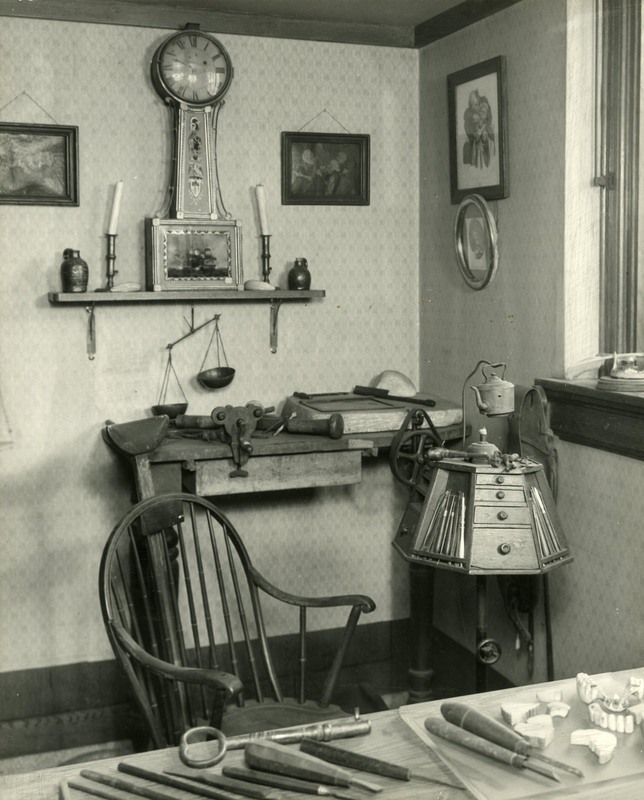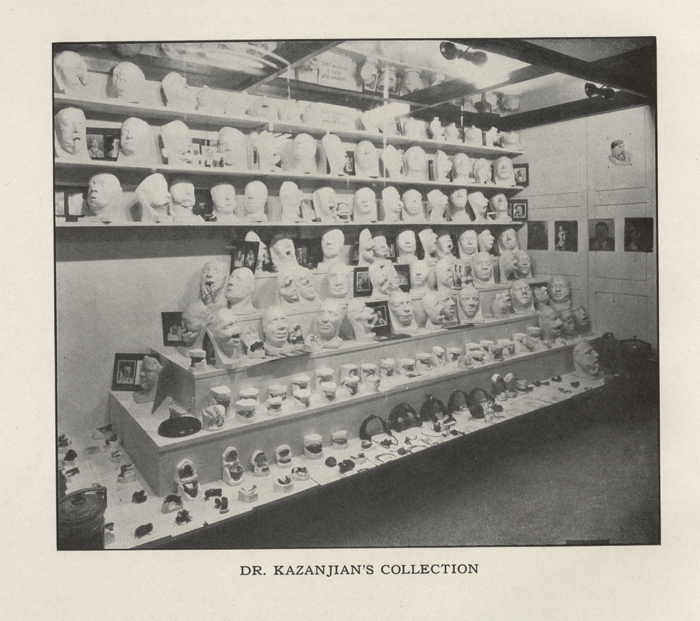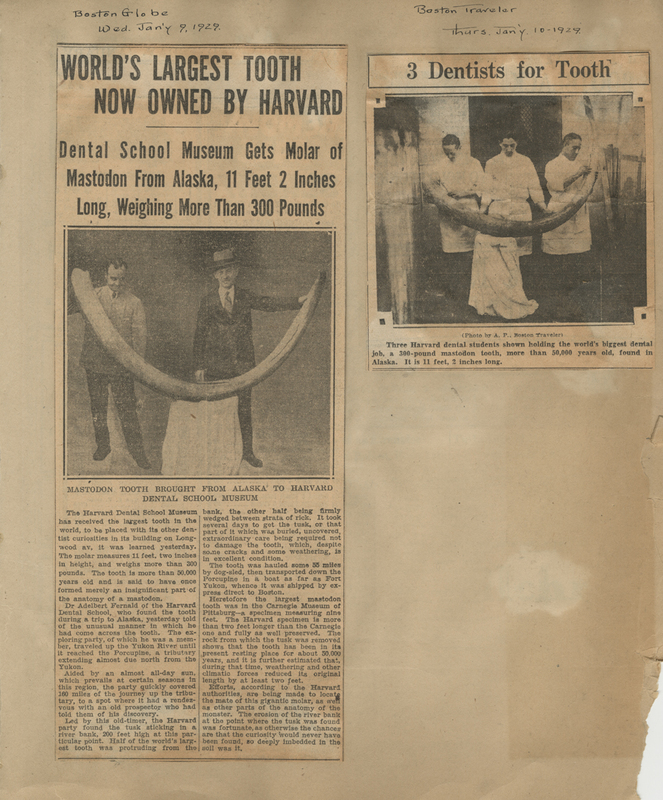Fernald's Expansions
In addition to soliciting the alumni for funds and additions to the museum collection, Adelbert Fernald also began to collect and preserve items related to the history of the Dental School, such as diplomas from the first graduates. He assisted George H. Monks to produce a short printed history of the Museum for the Harvard Alumni Bulletin in 1925 and made substantial contributions to Richard Locke Hapgood's full-length publication, History of the Harvard Dental School (1930).
As part of his renovation of the Dental Museum, Adelbert Fernald brought the cataloging of the collection up to date and proposed a formal register of loans of specimens for use in lectures. Within the Museum itself, he organized a permanent display recreating the early 19th century dental office of John Randall (1774-1843) with his operating chair, instruments, drill and clock. Displays of minerals and metals used in past and present dental reconstruction were also mounted. Fernald worked with Commander Donald B. MacMillan of the Free Dental Clinic of the Far North to obtain a collection of dental impressions and skulls of the Inuit as examples of meat-eaters. These specimens were later contrasted with over 100 models of vegetable-eating peoples from the Yucatan.
In 1923, he brought in a major acquisition—the moulages and instruments used by Varaztad H. Kazanjian in his facial reconstruction work during World War I. During World War I, Dr. Kazanjian used his surgical skills to treat the soldiers severely disfigured during combat. In 1915, he was appointed chief dental officer of the First Harvard Unit, organized to serve overseas with the British Forces, and established the first dental and maxillofacial unit clinic in France as part of the Unit's services at the General Hospital in Camiers. Dr. Kazanjian treated approximately 3,000 patients and was eventually dubbed "Miracle Man of the Western Front." This monumental collection—over 7,000 specimens, including plaster masks, photographs and stereopticon pictures of the faces of soldiers showing cases before and after treatment, X-rays, and original drawings of plastic operations, along with over fifty war relics from the battle fields of France —more than doubled the size of the Museum's holdings and brought the total number of specimens to over 14,000.




